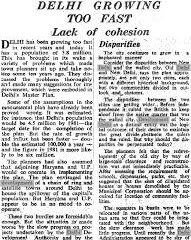Understanding the Astroworld Tragedy: Events and Impact

Introduction
The Astroworld tragedy, which occurred on November 5, 2021, during a concert featuring Travis Scott in Houston, Texas, stands as a significant moment in live music history. It resulted in the deaths of 10 individuals and many more injuries, igniting national conversations about concert safety, crowd management, and artist responsibility. The event raised critical concerns regarding how festivals and large gatherings are planned and executed, making it a relevant topic for concert-goers and event organizers alike.
Details of the Incident
During the concert, an estimated 50,000 fans gathered to enjoy the performance. As the show progressed, issues of overcrowding arose, leading to surging crowds that created life-threatening situations. Reports from the scene indicated that many attendees felt pushed forward as a wave of people advanced towards the stage, creating panic. Emergency services struggled to reach affected individuals as the chaotic atmosphere intensified.
In the aftermath of the tragedy, the Houston Fire Department stated that they declared a mass casualty incident shortly after the chaos began. Several fans were critically injured, and ultimately, ten individuals aged between 9 and 27 lost their lives. Investigations launched by the city of Houston, alongside lawsuits filed against Travis Scott and event organizers, aim to address failures in safety protocols and measures that could have potentially prevented such a disaster.
Ongoing Reactions and Consequences
The repercussions of the Astroworld tragedy extended beyond immediate legal actions. In the music industry, discussions regarding safety standards at concerts intensified. The tragedy prompted a broader examination of how event organizers could strengthen security protocols, improve crowd management techniques, and increase medical readiness at large events. Additionally, concert attendees found themselves reevaluating their expectations regarding safety measures and artist accountability.
In March 2022, the city of Houston established recommendations for concert safety procedures. Changes included stricter guidelines on crowd control, emergency response protocols, and better communication between security personnel and medical teams. These recommendations are essential in ensuring that similar incidents do not occur in the future.
Conclusion
The Astroworld tragedy serves as a somber reminder of the potential dangers associated with large-scale events. As festivals and concerts continue to grow in popularity, the need for comprehensive safety measures becomes increasingly critical. Moving forward, it is imperative for both organizers and artists to work together in fostering environments that prioritize the safety and well-being of attendees. The tragedy should not just be a moment of reflection, but a catalyst for meaningful change in the concert and festival landscape.









